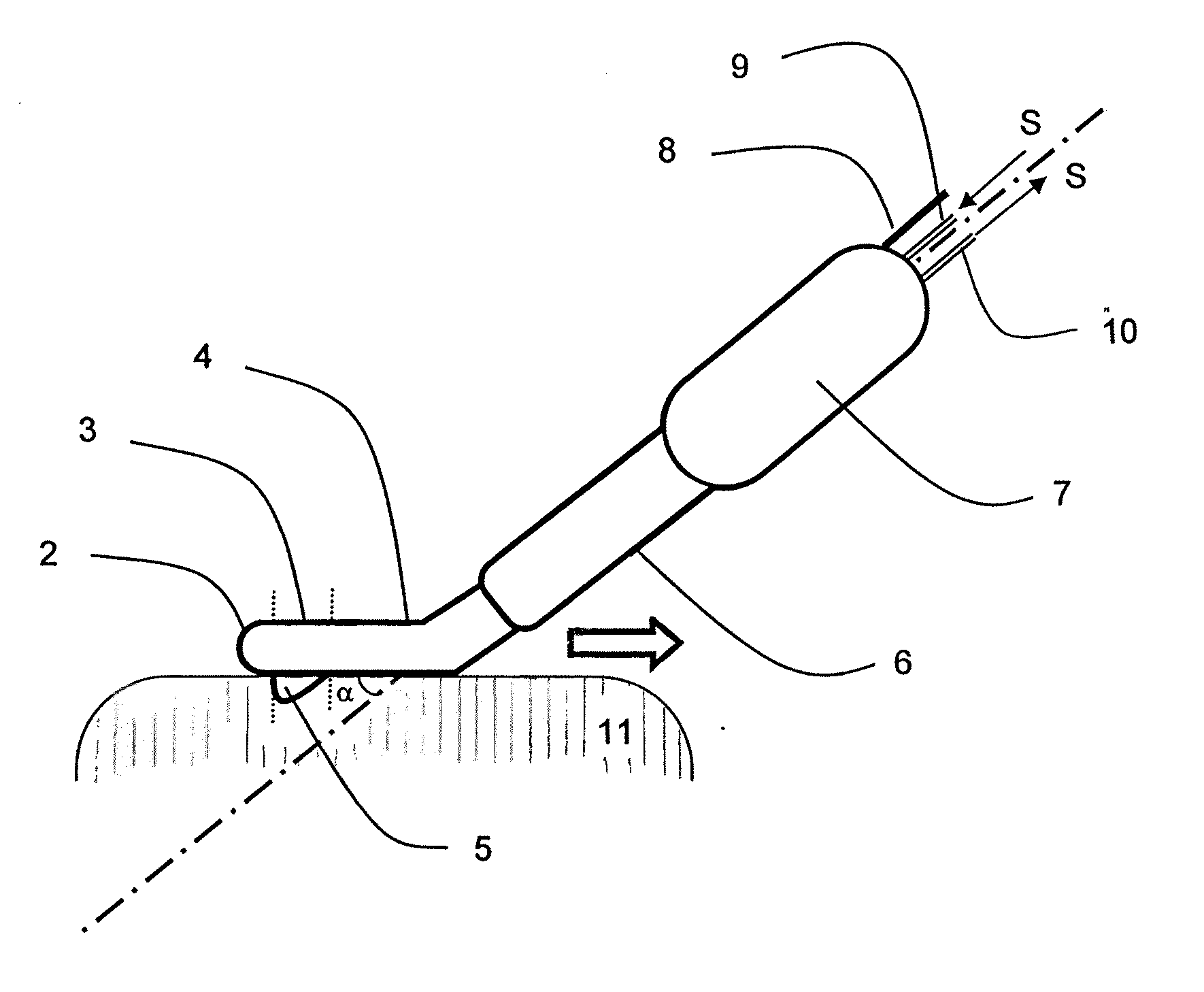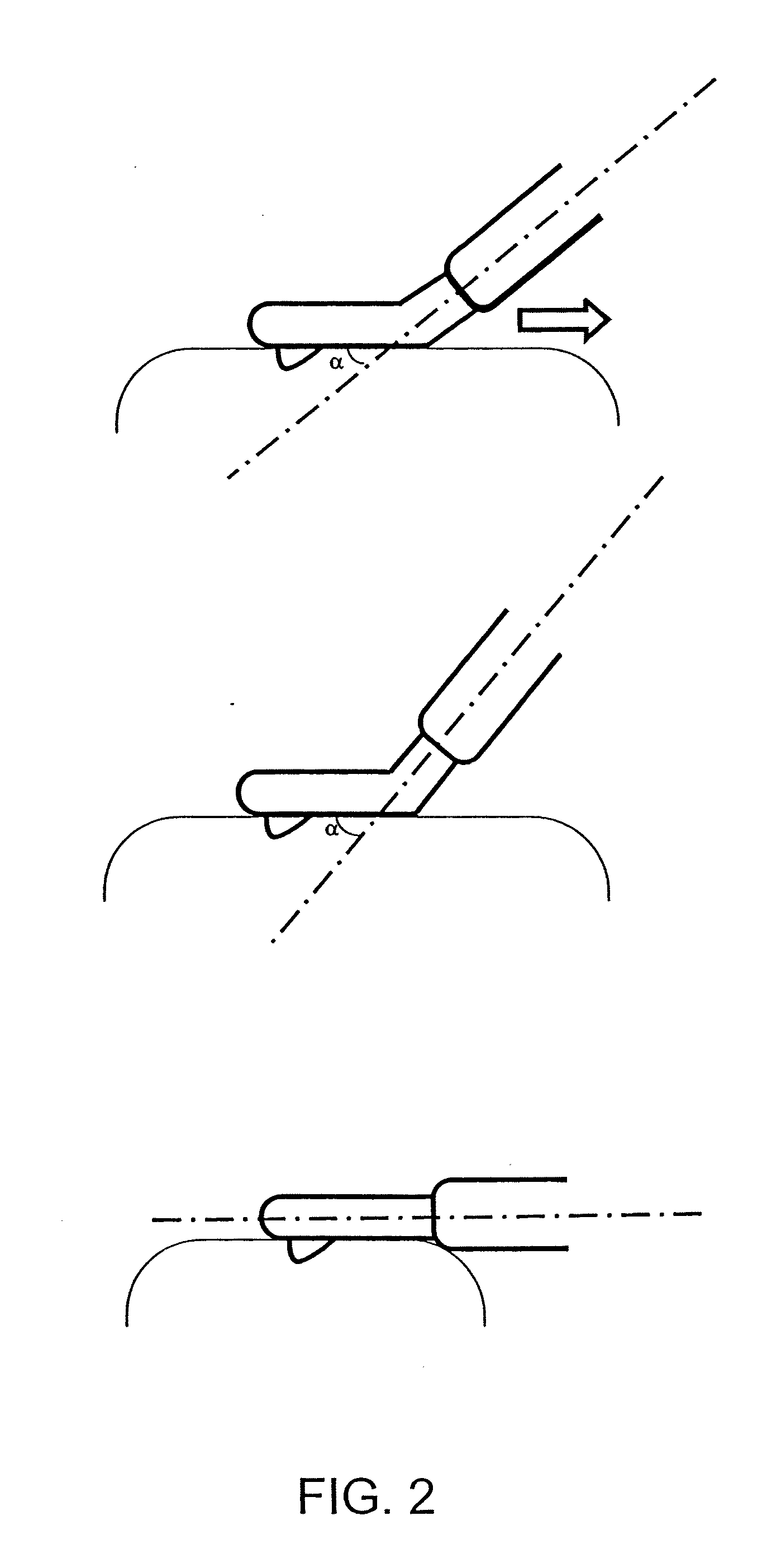Electrosurgical instrument for tissue coagulation and cut
a tissue coagulation and electrosurgical technology, applied in the field of electrosurgical instruments for tissue coagulation and cut, can solve the problems of increasing recurrence rate, reducing survival after resection, and tissue to be cauterized is often obscured by blood or smoke pool, so as to avoid any risk of bleeding and improve radio frequency assisted resection
- Summary
- Abstract
- Description
- Claims
- Application Information
AI Technical Summary
Benefits of technology
Problems solved by technology
Method used
Image
Examples
Embodiment Construction
[0028]FIG. 1 shows a scheme of a particular embodiment of the monopolar electrosurgical instrument 1 according to the present invention and FIG. 5 shows a scheme of the radio frequency-assisted device. Basically the monopolar electrosurgical instrument used is a hand-held instrument that, in a single unit, comprises the following systems: (i) a coagulating system, which is a cooled-tip electrode, having the tip electrically uninsulated, which is connected to a radio frequency generator (model CC-1; Radionics, Burlington, Mass.) at maximum power around 90 W in manual mode. This electrode comprises two internal lumens. One lumen delivers chilled saline solution (0° C.) by means of a peristaltic pump (Radionics, Burlington, Mass.) at a rate of approximately 130 ml / min, to the distal tip of the electrode, and the other lumen returns the warmed solution to an outer collection assembly; (ii) a cutting system which is a sharp 2 mm long metal blade 5 attached distally to the tip. The handle...
PUM
 Login to View More
Login to View More Abstract
Description
Claims
Application Information
 Login to View More
Login to View More - R&D
- Intellectual Property
- Life Sciences
- Materials
- Tech Scout
- Unparalleled Data Quality
- Higher Quality Content
- 60% Fewer Hallucinations
Browse by: Latest US Patents, China's latest patents, Technical Efficacy Thesaurus, Application Domain, Technology Topic, Popular Technical Reports.
© 2025 PatSnap. All rights reserved.Legal|Privacy policy|Modern Slavery Act Transparency Statement|Sitemap|About US| Contact US: help@patsnap.com



